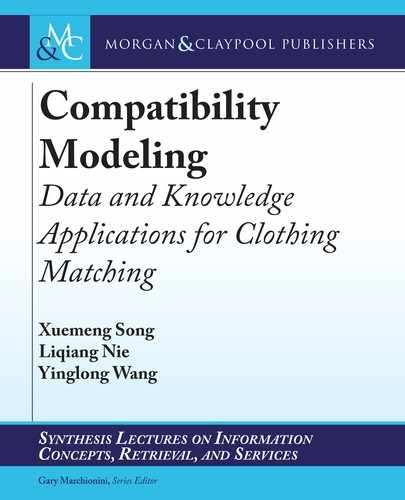
34 4. KNOWLEDGE-GUIDED COMPATIBILITY MODELING
Teacher
Top i Bottom j(k)
Knowledge
Distillation
Student
Loss
Figure 4.3: Workflow of the proposed attentive knowledge distillation framework.
Algorithm 4.1 Attentive Knowledge Distillation.
Input: D
S
D f.i; j; k/g, R D f.R
l
/g
L
lD1
, , C
Output: Parameters ‚ in the student network p, parameters ˆ in the attention network a.
1: Initialize neural network parameters ‚ and ˆ.
2: repeat
3: Draw .i; j; k/ from D
S
4: for each l in R.i; j; k/ do
5: Compute
l
.i; j; k/ according to Eqs. (4.9) and (4.10).
6: end for
7: Construct teacher network q according to Eq. (4.7).
8: Transfer knowledge into p by updating ‚ and ˆ according to Eq. (4.5).
9: until Converge
4.3.5 RULE CONSTRUCTION
In this work, we aim to leverage the explicit structured domain knowledge to guide the student
neural network and hence boost the performance. To derive the domain knowledge, we first ex-
ploit our internal training dataset, which contains rich positive top-bottom pairs. In general, the
compatibility between fashion items is mainly affected by five attributes: color, material, pat-
tern, category, and brand. We hence define a dictionary with the possible values of each attribute
based on the training dataset while taking the annotation details in [84] as a reference. Due to
..................Content has been hidden....................
You can't read the all page of ebook, please click here login for view all page.
